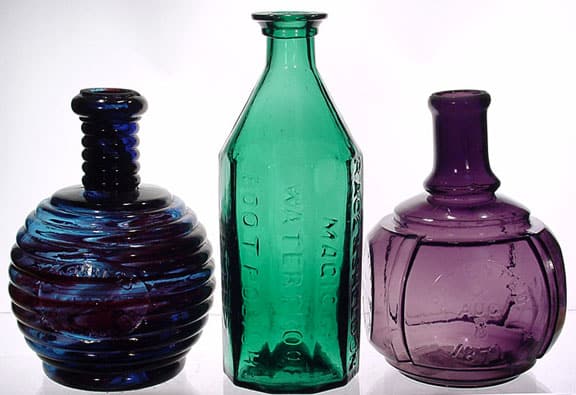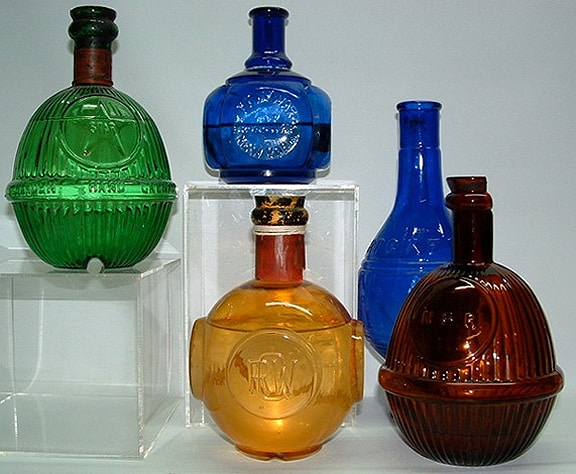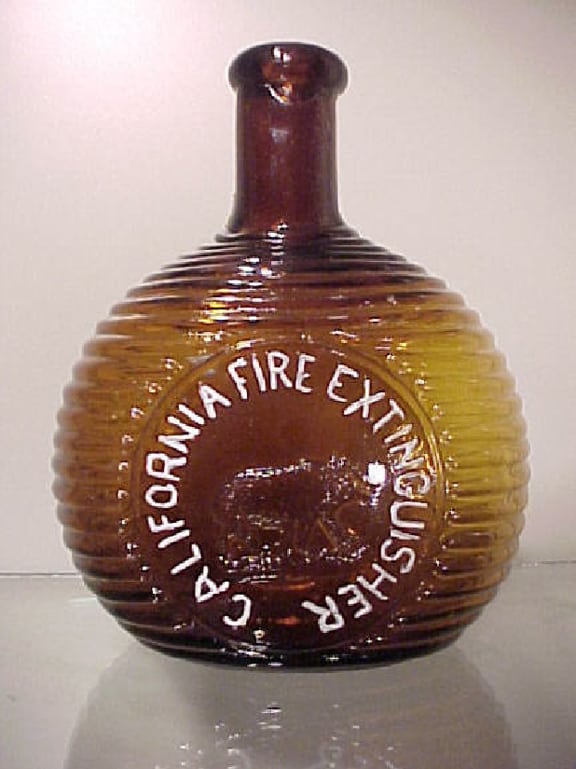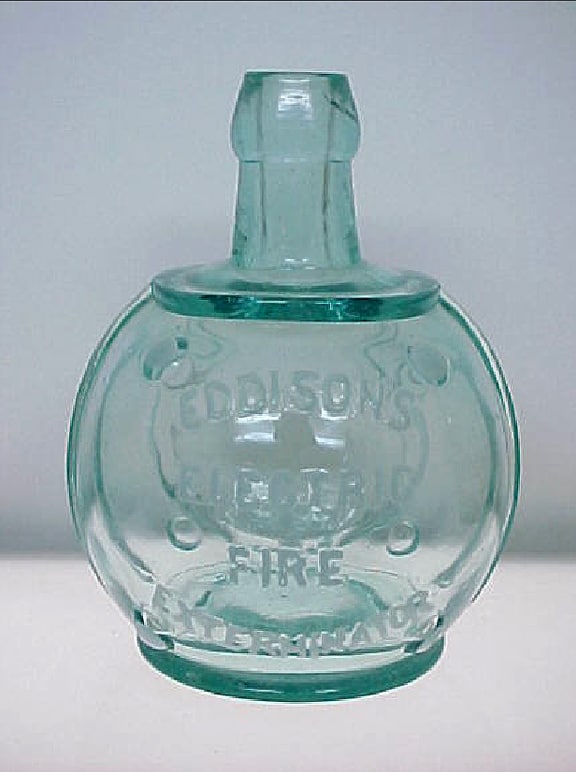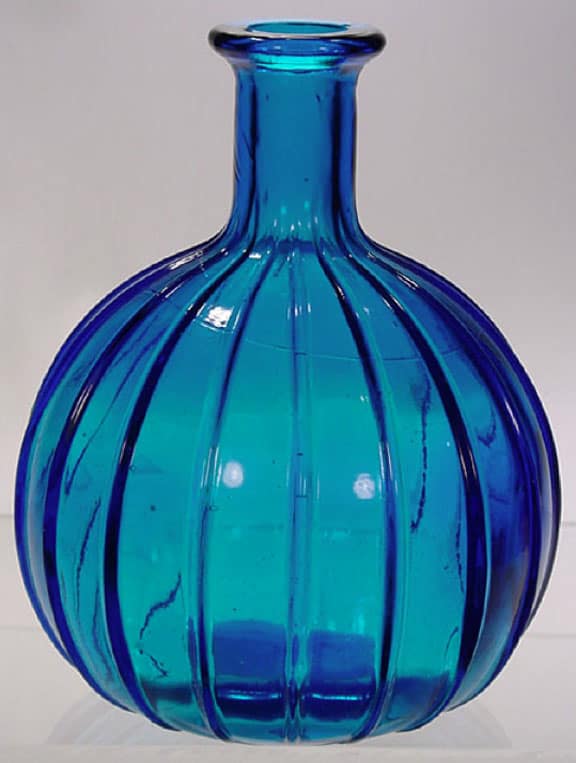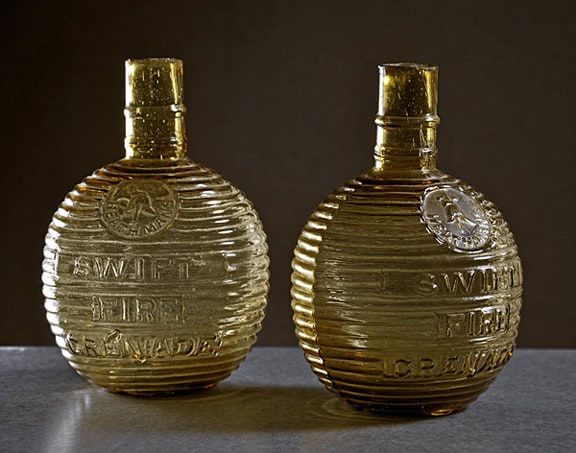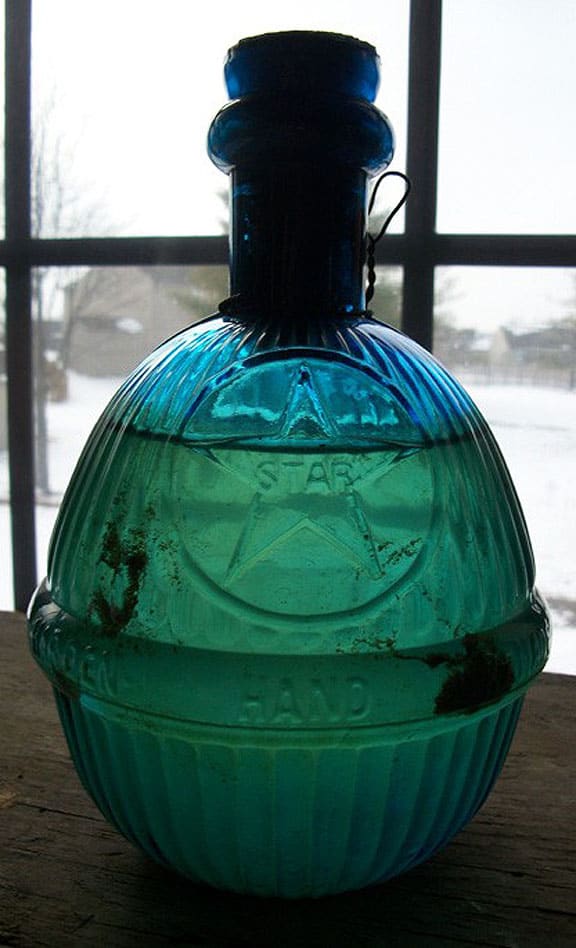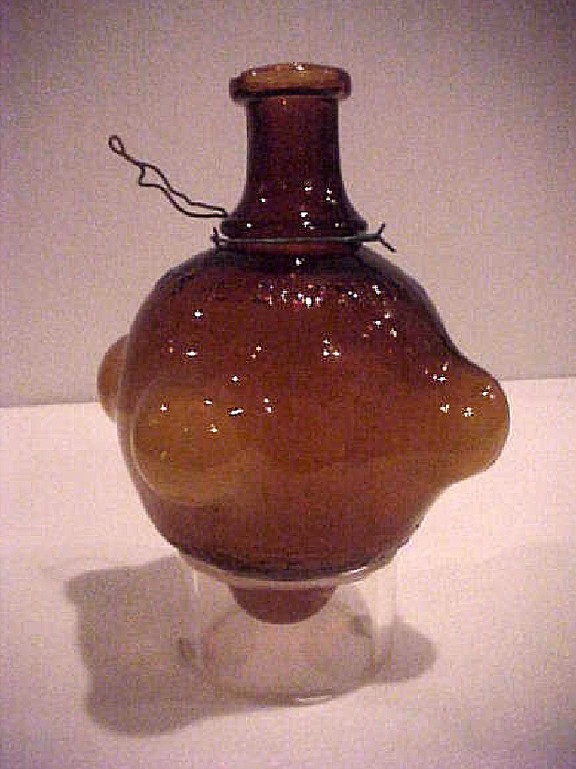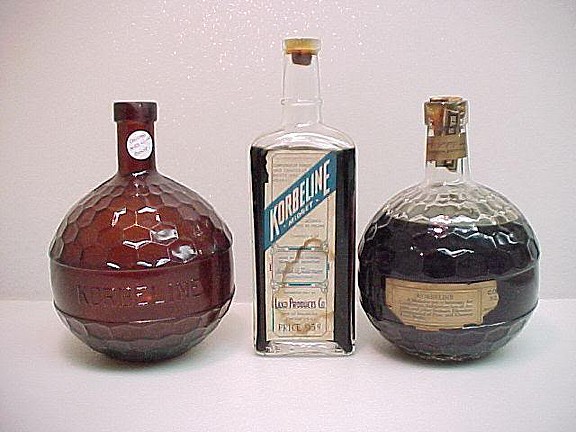The grenade was thrown at the base of the fire so the glass would smash and release the chemicals – putting out the fire.
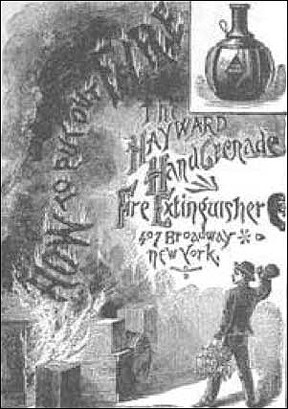 Recently I have written and posted about collectible antique Glass Paperweights, Target Balls, Marbles, Witch Balls, Fly Traps, Glass Fishing Floats, Lightning Rod Balls and Christmas Ornaments and now would like to discuss Glass Fire Grenade Bottles. Again, the common geometric shape is the circle as all of these objects are usually round.
Recently I have written and posted about collectible antique Glass Paperweights, Target Balls, Marbles, Witch Balls, Fly Traps, Glass Fishing Floats, Lightning Rod Balls and Christmas Ornaments and now would like to discuss Glass Fire Grenade Bottles. Again, the common geometric shape is the circle as all of these objects are usually round.
What amazes me is that there are just so many areas of our hobby to investigate and potentially collect. Of course ‘glass’ is the material that really binds all this together.
Glass fire extinguisher ‘grenades’ or bottles were containers that held chemicals and were typically six to eight inches tall. They had a narrow neck with a round body and were sealed with cement and a cork. The cement seal prevented the liquid from escaping should the cork shrink. Other versions had a foil seal placed over the cork to create additional protection. There was often a wire loop on the neck used to hang the grenade from a hook on the wall or a nail. Often, two or three of these grenades were sold at time in a wire basket.
The grenade was thrown at the base of the fire so the glass would smash and release the chemicals – putting out the fire. Most were made after 1870 and until about 1910. These glass grenades are rare since they were made to be destroyed. They are often ornate and come in striking colors, so they are very sought after by collectors.
[from Wikipedia] Another type of carbon-tetrachloride extinguisher was the Fire Grenade. This consisted of a glass sphere filled with CTC, that was intended to be hurled at the base of a fire (early ones used salt-water, but CTC was more effective). Carbon tetrachloride was suitable for liquid and electrical fires and the extinguishers were fitted to motor vehicles. Carbon-tetrachloride extinguishers were withdrawn in the 1950s because of the chemical’s toxicity–exposure to high concentrations damages the nervous system and internal organs. Additionally, when used on a fire, the heat can convert CTC to Phosgene gas, formerly used as a chemical weapon.
I have put together a Gallery of pictures showing a rather wide range of shapes and design. The colors, as you will see, are outstanding.
Read More: Antique Fire Grenade Bottles by Maureen Timm
Read More: Shop Owner and Dealer Alert…Glass Fire Extinguishers Can Be Hazardous To Your Health! by Kathy Greer
Read More: In Case of Fire…Throw Grenade! by Pam Poston
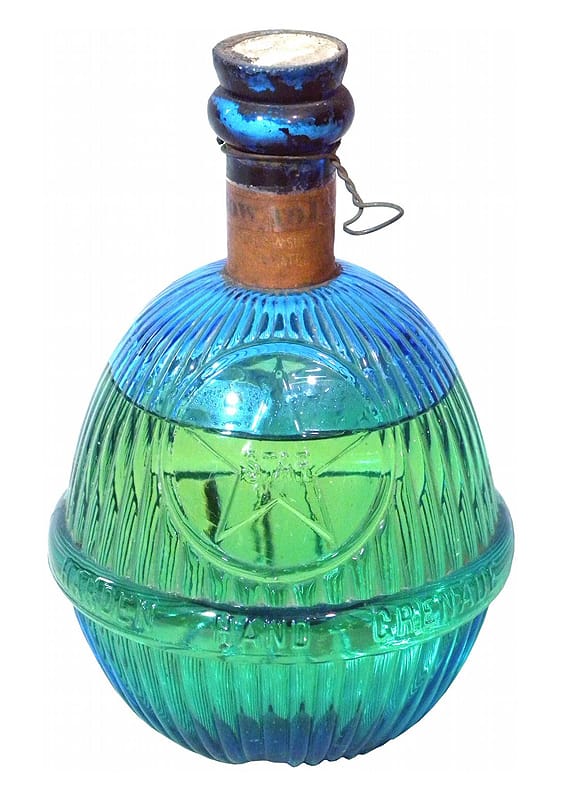
Star Glass Fire Grenade. HARDEN HAND GRENADE. Blue glass with original seal. 8 inches tall – photo icollector.com
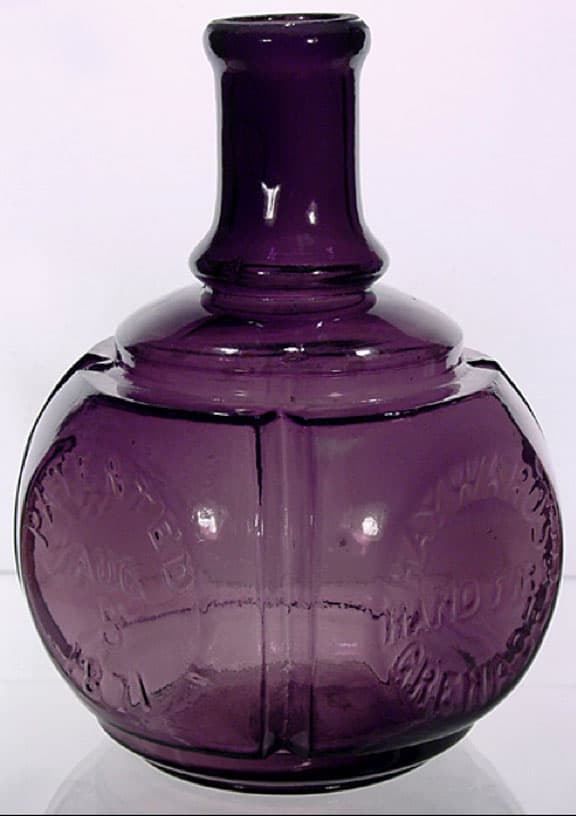
HAYWARD’S / HAND FIRE / GRENADE – PATENTED / AUG / 8 / 1871 – S.F. HAYWARD / 407 / BROADWAY – NEW YORK – photo GreatAntiqueBottles.com
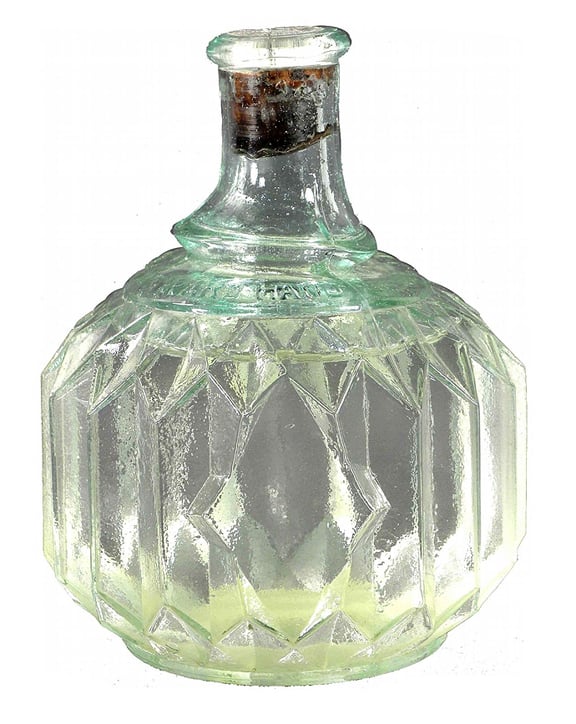
Hayward Hand Fire Extinguisher Grenade, New York. Light green glass has original seal. 5 inch diameter X 6 inches tall – photo icollector.com
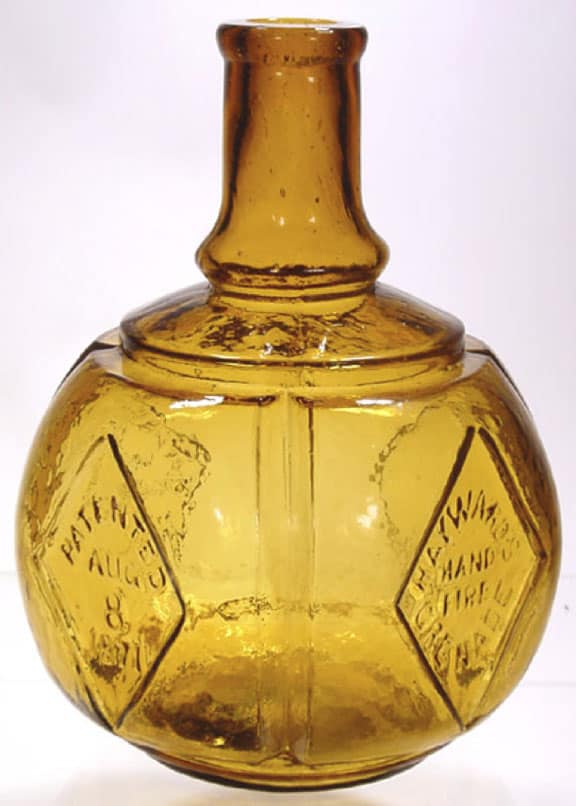
Yellow with an amber tone HAYWARD’S / HAND FIRE / GRENADE – PATENTED / AUG / 8 / 1871 – S.F. HAYWARD / 407 / BROADWAY – NEW YORK – photo GreatAntiqueBottles.com
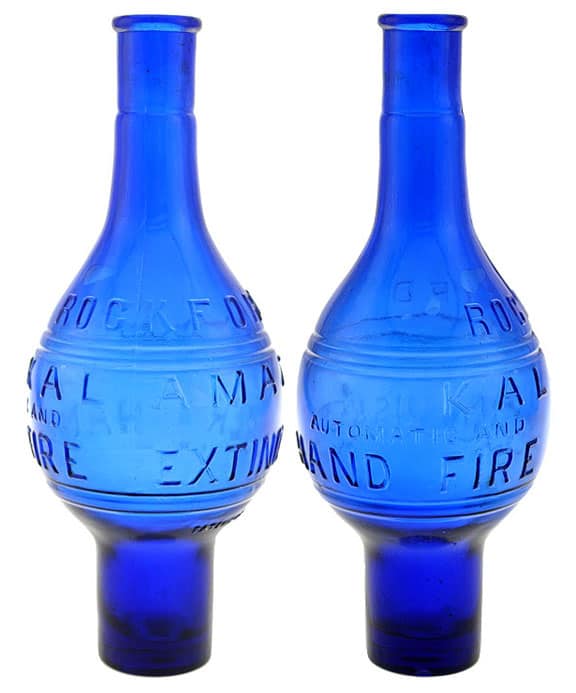
Fire Grenade, “ROCKFORD / KALAMAZOO / AUTOMATIC AND / HAND FIRE EXTINGUISHER”, Michigan, ca. 1880 – 1895, cobalt blue, 11 1/8”h, smooth base, tooled mouth. – photo Glass Works Auctions
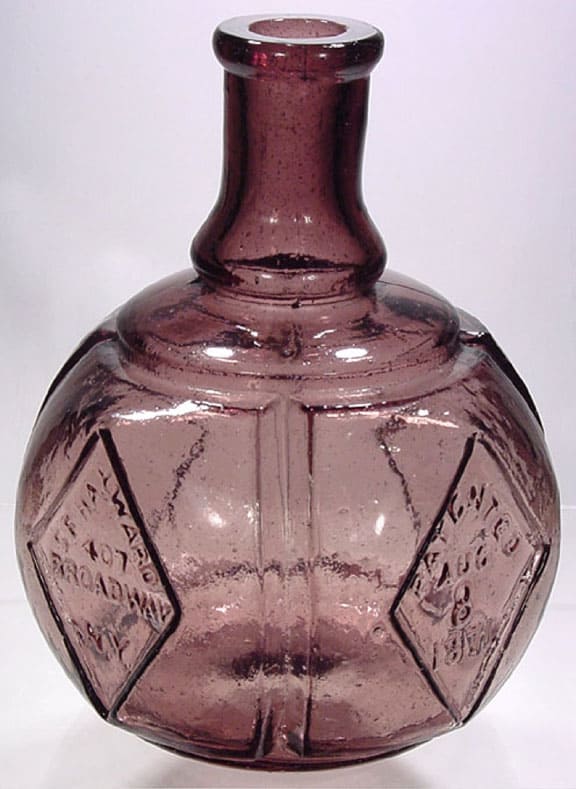
Amethyst HAYWARD’S / HAND / FIRE / GRENADE – PATENTED / AUG / 8 / 1871 – S.F. HAYWARD / 407 / BROADWAY – NEW YORK – photo GreatAntiqueBottles.com
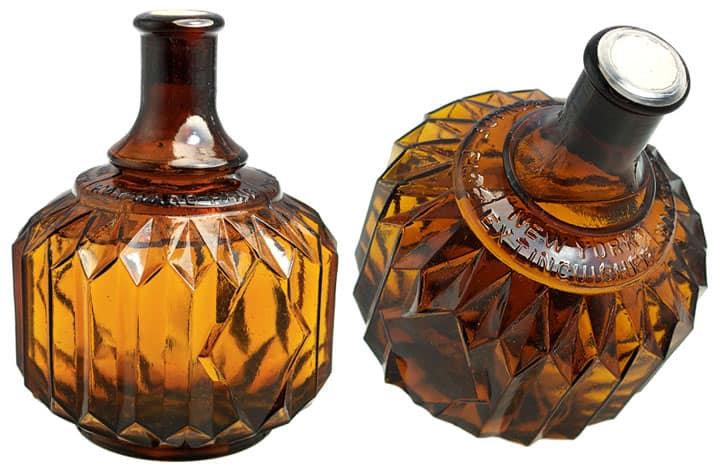
Fire Grenade, “HAYWARD’S HAND – GRENADE FIRE – NEW YORK / EXTINGUISHER”, New York, ca. 1875 – 1900, yellowish amber, 6 5/8”h, “DESIGN PATD.” on smooth base, sheared and tooled lip, original contents, perfect condition. A very rare fire grenade in both the larger size and color that is normally found in either cobalt blue or clear glass. – Glass Works Auction #96

